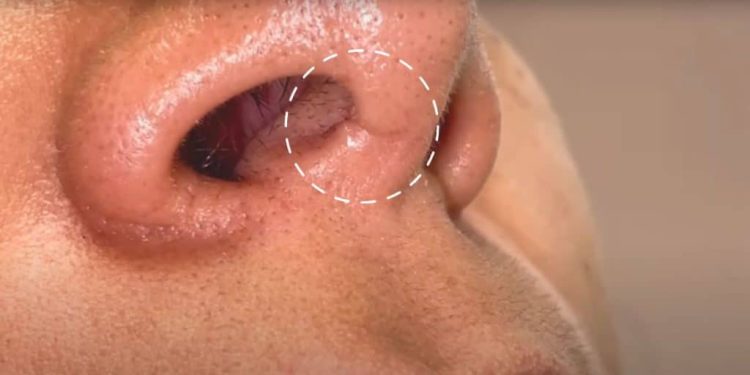You may consider rhinoplasty, commonly known as a nose job, for cosmetic reasons or to correct functional issues. While it’s a popular and often successful procedure, understanding the potential for scarring is crucial. In this article, we’ll explore everything you need about scars from nose job surgery.
Rhinoplasty is a surgical procedure to alter the shape or size of the nose. The types of nose job surgeries vary, including open rhinoplasty, which involves an external cut and closed rhinoplasty, performed internally.
Causes of Scarring in Rhinoplasty
In Nose Job Turkey, scarring is an inevitable part of the healing process, but the extent and visibility of scars can vary widely. Here are key factors that contribute to scarring:
- Surgical Technique: The choice between open and closed rhinoplasty significantly influences scarring. Open rhinoplasty involves a small incision on the columella (the skin between the nostrils), leading to a more noticeable scar. On the other hand, closed rhinoplasty is performed entirely inside the nostrils, leaving no visible external scars.
- Skin Type and Genetics: Your skin type plays a crucial role in how you scar. Individuals with darker skin tones may have a higher risk of developing keloids or hypertrophic scars. Genetic factors also influence your skin’s healing ability and scar formation.
- Surgeon’s Expertise: The skill and experience of the surgeon are crucial. A skilled surgeon can make precise incisions and use techniques that minimize scar tissue formation.
- Post-operative Care: The care you take after surgery affects scarring. Poor wound care, infection, or excessive movement can worsen scarring.
- Individual Healing Response: Every person’s body heals differently. Some may heal with minimal scarring, while others might develop more noticeable scars despite similar conditions and care.
Types of Scars from Nose Job Surgery
Scars from nose job surgery can be categorized mainly into two types:
- Visible Scars: These occur in open rhinoplasty on the columella. They’re generally small and can be well-concealed but might be more noticeable in some individuals. These scars can take the form of fine lines and, with proper care, often fade significantly over time.
- Hidden Scars: In closed rhinoplasty, the incisions are made inside the nostrils, resulting in scars that are not visible externally. While these scars don’t affect the external appearance, they can sometimes alter the internal nasal structure, potentially impacting nasal function.
Prevention and Minimization of Scars
Minimizing scarring begins well before the surgery and continues through the recovery process. Here are strategies for scar prevention and reduction:
- Choosing the Right Surgeon: Select a board-certified plastic surgeon with experience in rhinoplasty. Their expertise in precise incision-making and tissue handling can significantly reduce scarring.
- Discussing Scar Concerns Pre-Surgery: Have an open discussion with your surgeon about your concerns regarding scarring. This can influence the choice of surgical technique.
- Following Pre- and Post-Operative Instructions: Adhering to your surgeon’s instructions before and after surgery is vital. This includes avoiding certain medications, smoking, and following specific wound care protocols.
- Proper Wound Care: Keeping the surgical area clean and moist aids in healing and reduces scarring. The use of recommended topical treatments or silicone gel strips can help.
- Avoiding Sun Exposure: UV rays can darken scars, making them more noticeable. Protecting the nose from the sun is crucial, especially in the months following surgery.
- Monitoring and Early Intervention: Regular follow-up appointments allow for monitoring of the healing process. Early intervention in the case of abnormal scarring can prevent worse outcomes.
By understanding these aspects, you can be better prepared for your rhinoplasty journey and work towards achieving the best possible results with minimal scarring.
Immediate Post-Operative Care
- Follow Your Surgeon’s Instructions: Adherence to your surgeon’s specific guidelines cannot be overstated. This will include how to clean the surgical area, remove or change bandages, and the signs of complications to watch for.
- Rest and Elevation: Keep your head higher than your heart for several days post-surgery. This helps reduce swelling and aids in the healing process, indirectly impacting scar formation.
- Cold Compress: Use cold compresses (not directly on the nose) to reduce swelling around the eyes and cheeks. Be gentle to avoid any pressure on the nose.
- Avoid Strenuous Activities: Limit activities that increase blood pressure, as they can exacerbate swelling and affect wound healing. Activities like bending, lifting heavy objects, or strenuous exercise should be avoided for a few weeks, as your surgeon advises.
Long-Term Scar Care Strategies
- Scar Massage: Once your surgeon gives the go-ahead, usually a few weeks post-surgery, gentle massage can help. This can soften the scar tissue and promote better healing. Use a recommended moisturizer or scar treatment cream.
- Silicone Gel Sheets or Scar Gels: These products are often recommended for scar management. They keep the area moist and can help flatten and fade the scar.
- Sun Protection: UV exposure can darken scars, making them more prominent. Use a broad-spectrum sunscreen on your nose (once the wound has sufficiently healed) to protect the scar from UV rays. Consider wearing a hat or avoiding direct sun exposure for extended periods.
- Avoid Smoking and Alcohol: Smoking can significantly impair healing by reducing blood flow, while alcohol can increase swelling. Both should be avoided during the recovery period.
- Healthy Diet and Hydration: A nutritious diet rich in vitamins (especially Vitamin C) and minerals can aid healing. Keeping hydrated is equally important for skin health and recovery.
- Regular Check-ups: Attend all follow-up appointments with your surgeon. These visits allow the surgeon to monitor the healing process and intervene early if there are signs of abnormal scarring.
- Be Patient and Realistic: Healing and scar maturation is a gradual process that can take up to a year or more. It’s important to have realistic expectations and be patient.
Monitoring and Managing Complications
By meticulously following these post-surgical care steps, you can significantly influence the outcome of your surgery, especially in terms of scarring. Remember, each individual’s healing process is unique, and giving your body the time and care it needs to recover is important.














